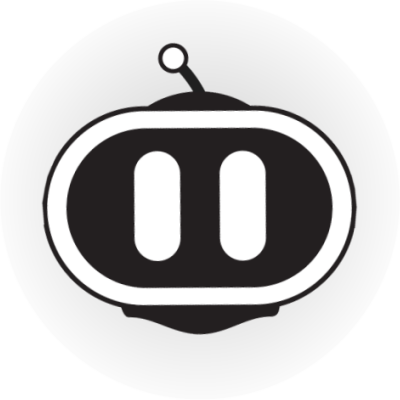Create Product Categories
Learn how to organize your Apiboost products using categories
Product Categories Explained
API products are categorized according to the terms listed in the product categories vocabulary. To add a new product to the website, it must be assigned to a category from this vocabulary.
During installation, the vocabulary is created with default terms arranged in a parent/child hierarchy. This arrangement serves a purpose, which can be observed by browsing through a large catalog. You will notice that parent categories in the left rail menu expand to reveal their subcategories.
In the example below, the primary categories for “Books” and “Movies” are visible with their subcategories.
Note: While nesting categories is allowed, each API Product is still limited to one, regardless of the category’s nested status.
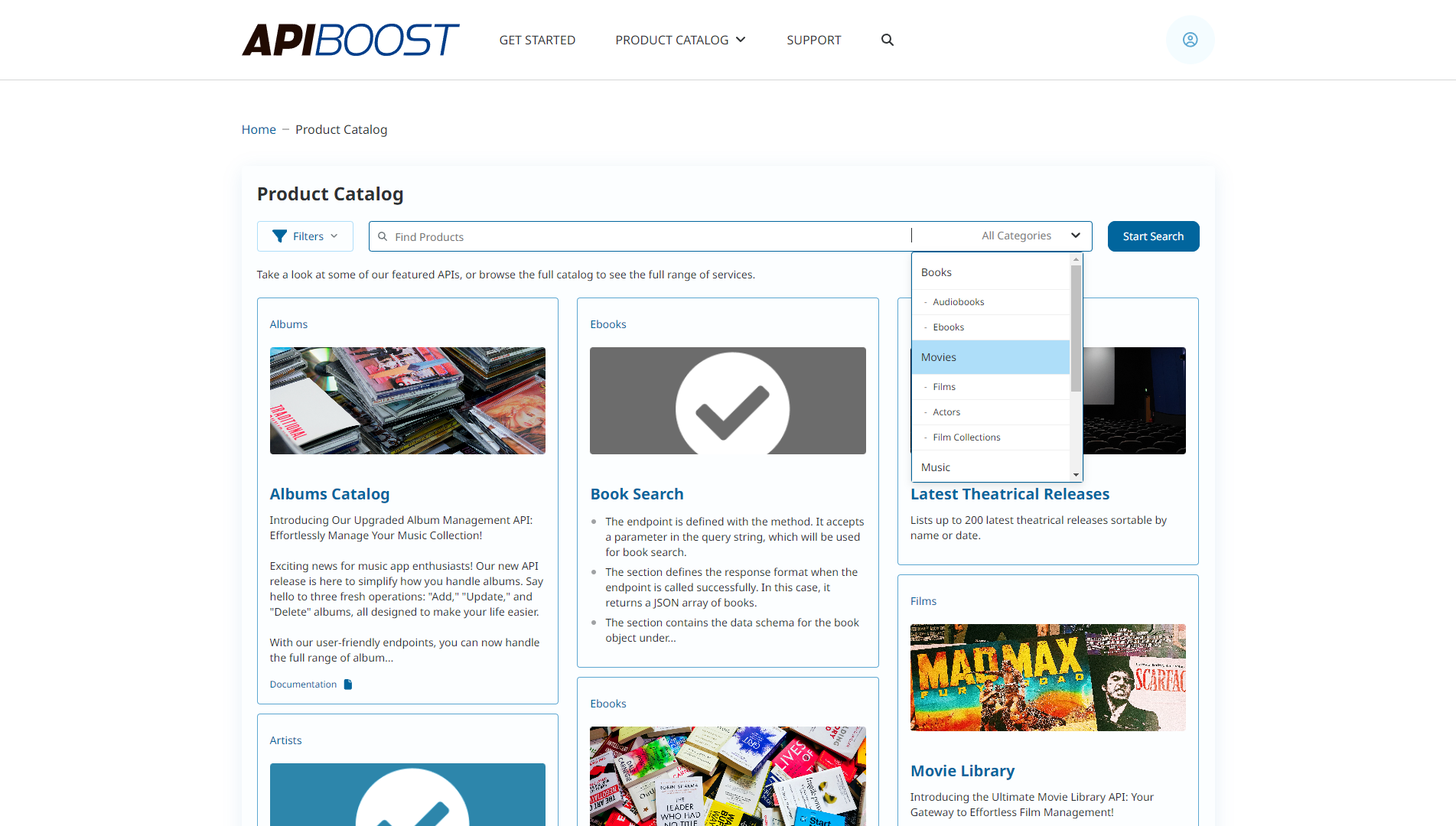
The large API Product Catalog with categories menu expanded.
This is achieved through the use of parent/child items in taxonomy. The parent item appears as a collapsible link, while each nested child item is a link within it.
Managing Product Categories
To manage product categories, click the Catalog Settings link under Site Settings in the left size admin menu:
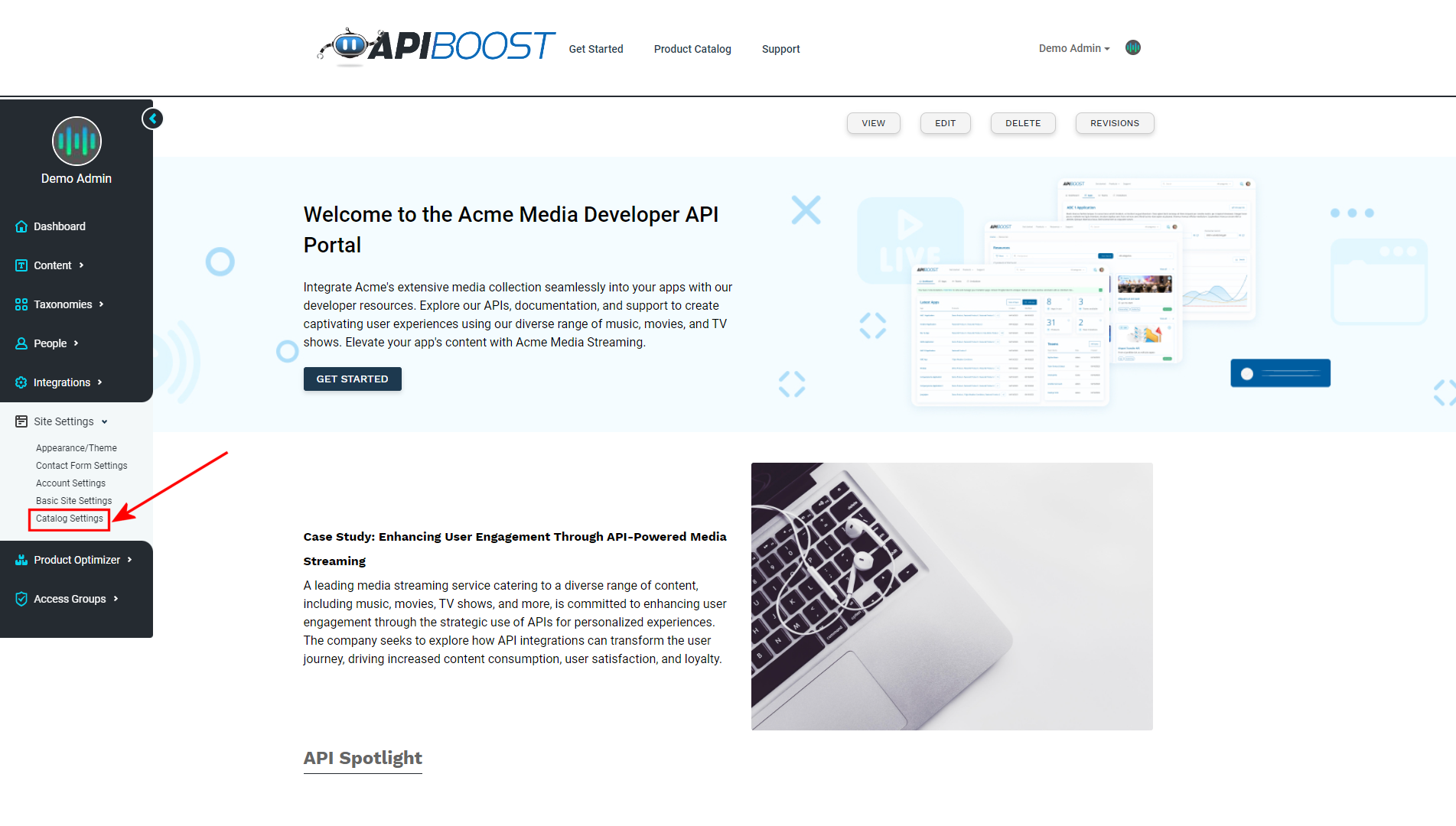
The Catalog Settings Link
On the catalog settings page, product categories can be enabled or disabled using the very first toggle that appears at the top:

The toggle switch to enable and disable product categories
Existing categories can remain if they’re being disabled. Deleting is up to the user.
Below the switch is a button that says Manage Product Categories. Clicking the button will bring the user to a list of product categories to edit. However, it’s worth noting there’s a handy link in the admin menu that goes to a list of the portal’s product categories as well. Using the left hand menu, click the taxonomy icon and the link to product categories:
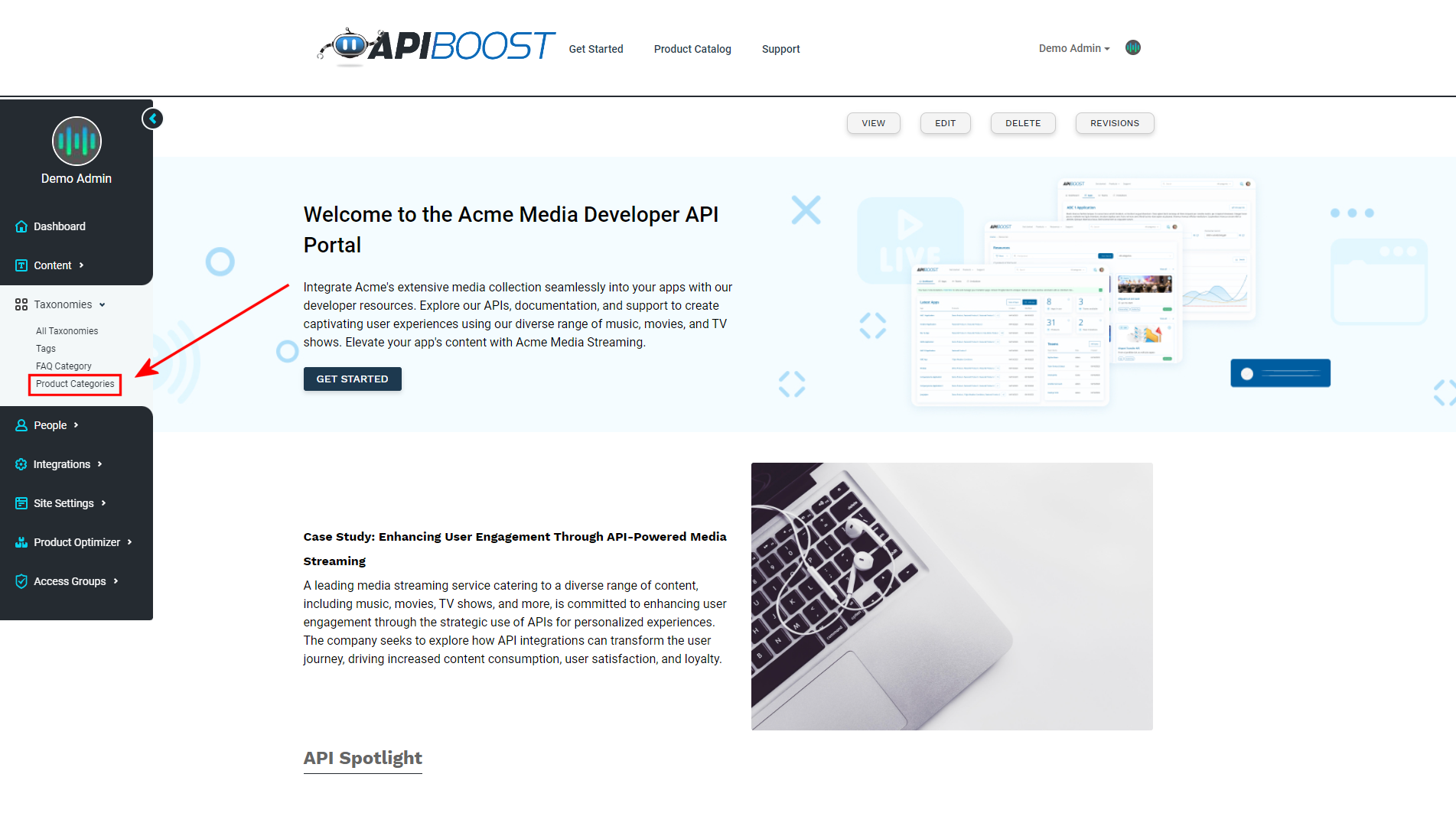
Editing product categories from the left admin menu
Using either method will bring the user to a list of product categories which they can then edit:
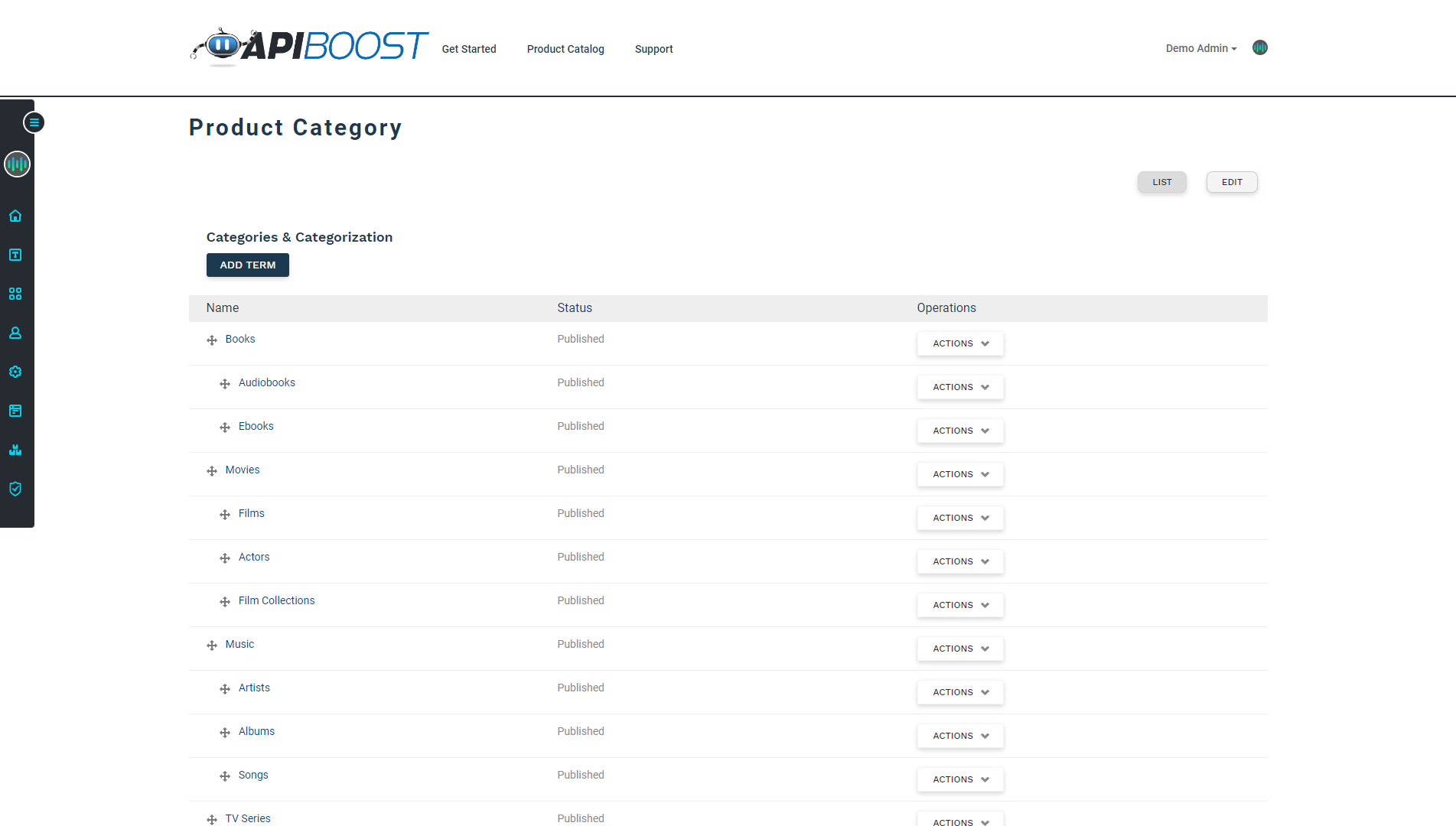
An example list of Product Categories
The Apiboost product catalog vocabulary supports two levels of categorization. Tertiary items, if present, will be promoted in the menu to subcategories.
Best Practices Using the Category Menu
Although there are no strict limitations on the number of primary categories or subcategories, it is recommended that subcategories are relevant to their respective parent categories. This is considered a best practice in organizing the hierarchy of categories.
Product Filters
Filters are a secondary method of cataloguing API products. While an API product can only have one primary category, there's no set limit to how many filter tags it may have. A best practice for using API filters is creating filters that apply broadly to APIs in different categories.
In the example below, the primary categories for “Books” and “Movies” are visible with their subcategories.
Note: While nesting categories is allowed, each API Product is still limited to one, regardless of the category’s nested status.

The large API Product Catalog with categories menu expanded.
On the left of categories is the filters menu, shown below. While “Books” or “Movies” may work as primary categories, tags such as “Genre” or “Language” would be better suited as filters. The reason is while neither filter is specific to a category, they’re relevant to both. Books and Movies have Genres and Languages in common. This broad approach to categorization helps the user find the API Products they need first by primary category and then drilling down by relevant filters.

Using filters in the Product Catalog
Not every catalog can be as clear cut or simplified as the examples above. It may not even make sense for an organization to use filters (using small catalog instead). These are only a few things to consider when building an API catalog.
